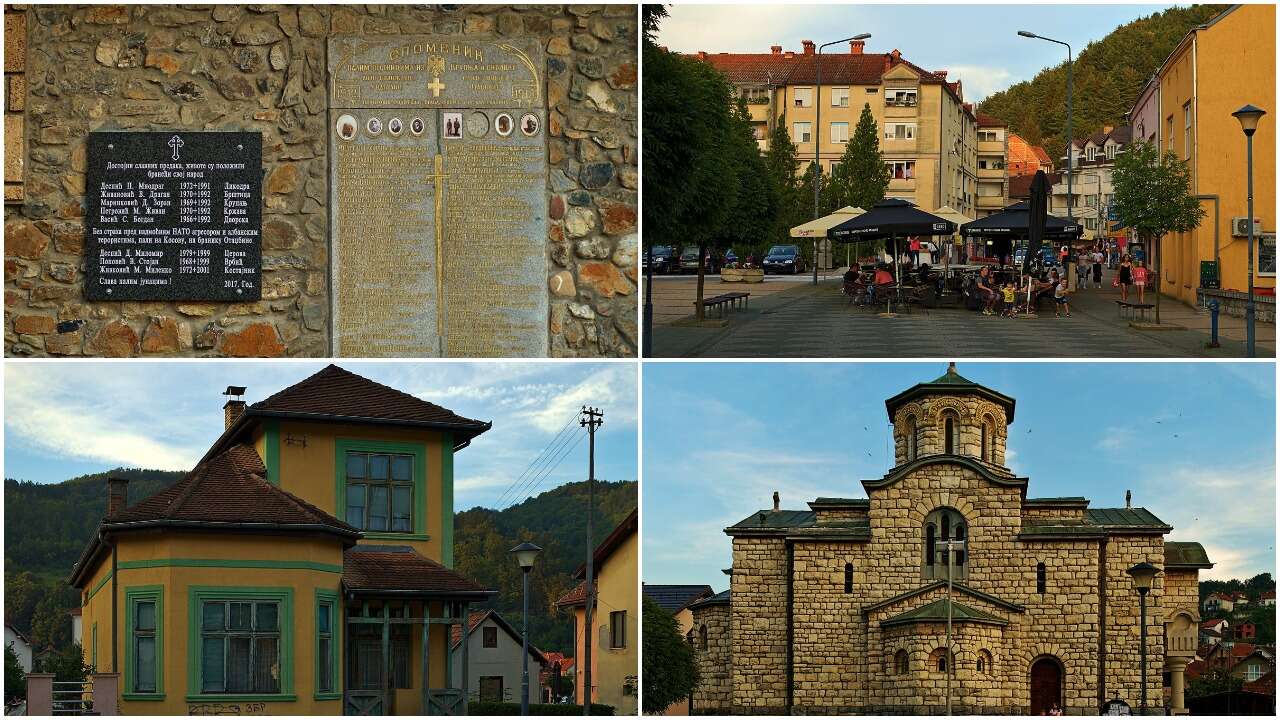The first thing you notice as you are walking down the streets of Krupanj, a town in western Serbia, center of the region called Rađevina – is serenity. Unreal, as you think of the speed, the unimaginable speed of our everyday lives – an unexpected and completely disarming peace.
As you try to avoid the cheerful gangs of children speeding through the center of this town, put into the endless green forests of the surrounding mountains, you will notice the smiling faces of people, a freshness which can only be seen in those people who are directly connected to nature. This is something most of us accustomed to living somewhere between the grey cities and the mobile phone screens never felt. You will also see simple, nice and pretty buildings, you will hear songs from local taverns, you will feel the smell of roasting, and soon, on your lips, you will feel the taste of beer or quality wines offered by Serbia.
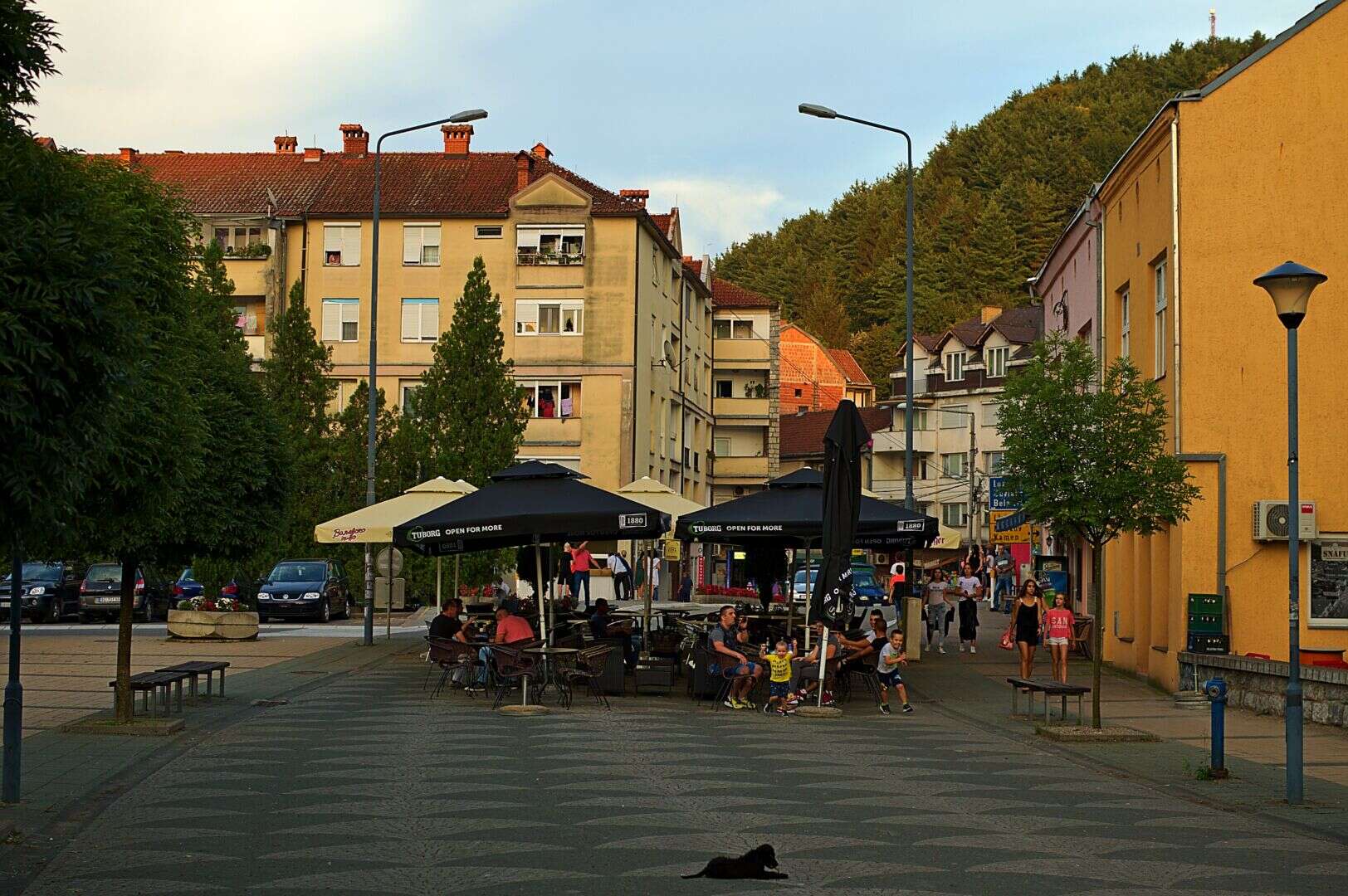
People? They fit perfectly into what you have seen so far: cheerful, friendly, easy-going… They approach you slowly, as if they know you for a long time, they greet you, they ask you with their eyes, noticing your enthusiasm and nuisance to this unreal place: “why are you in such a hurry?”
They are calling you to visit one of the many restaurants, cafes and bars in the main street of this town. There are no cars, there is no rush, although it’s always crowded.
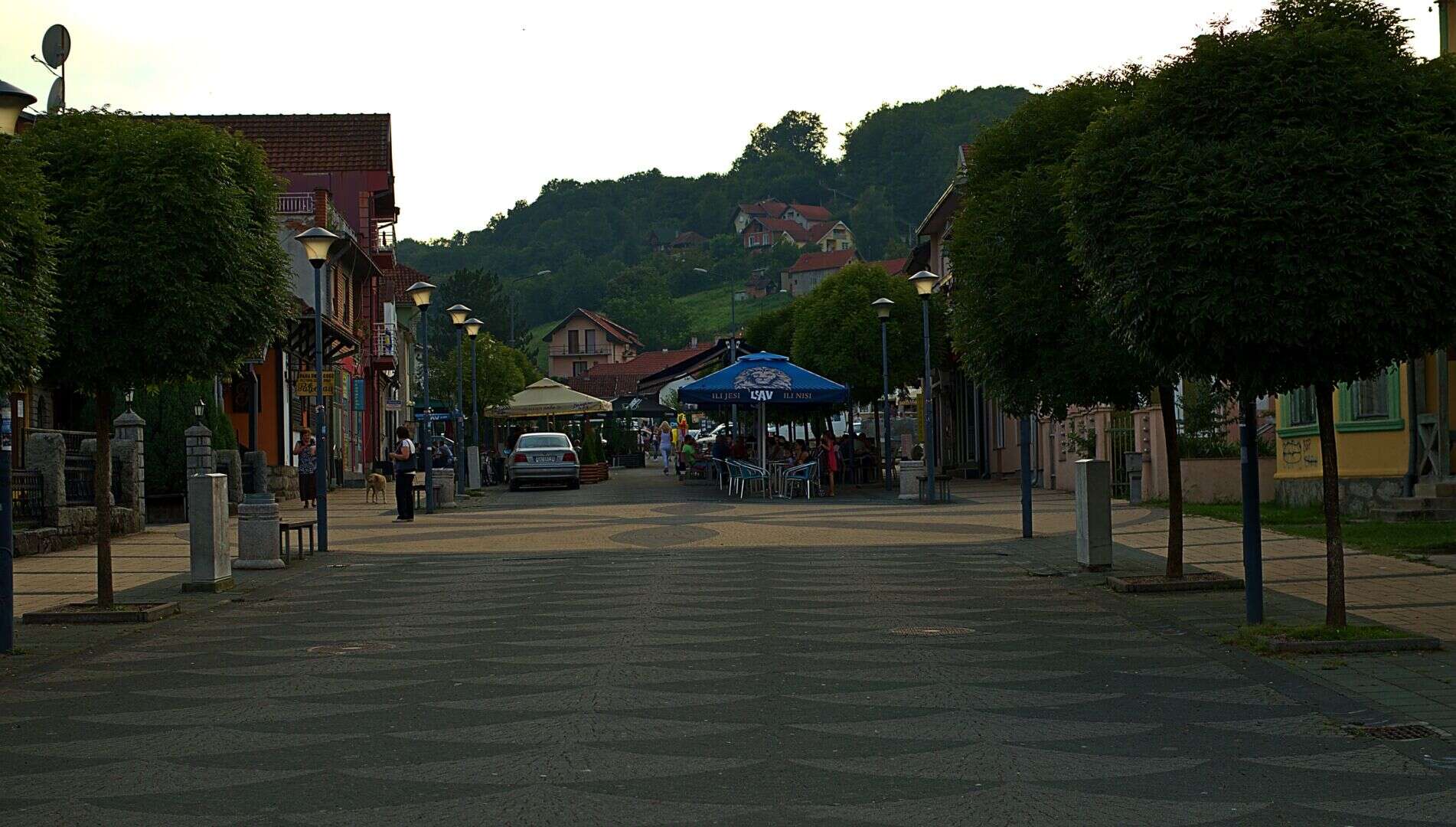
Krupanj. A place that makes you think it is made in order for a movie that takes place in the 70s or 80s to be filmed, taking us some 40 years back – to a more relaxed time, when life was much simpler and happier. As you sit and chill, you are further fascinated by the peace and harmony of everything you see and hear, and through your head passes a thought – “this is how world once looked like – slow, fine, nervousness-less, a place without deadlines, without rush…”
But like everything else in the Balkans, Krupanj is all that it is not, and it is not what it is.
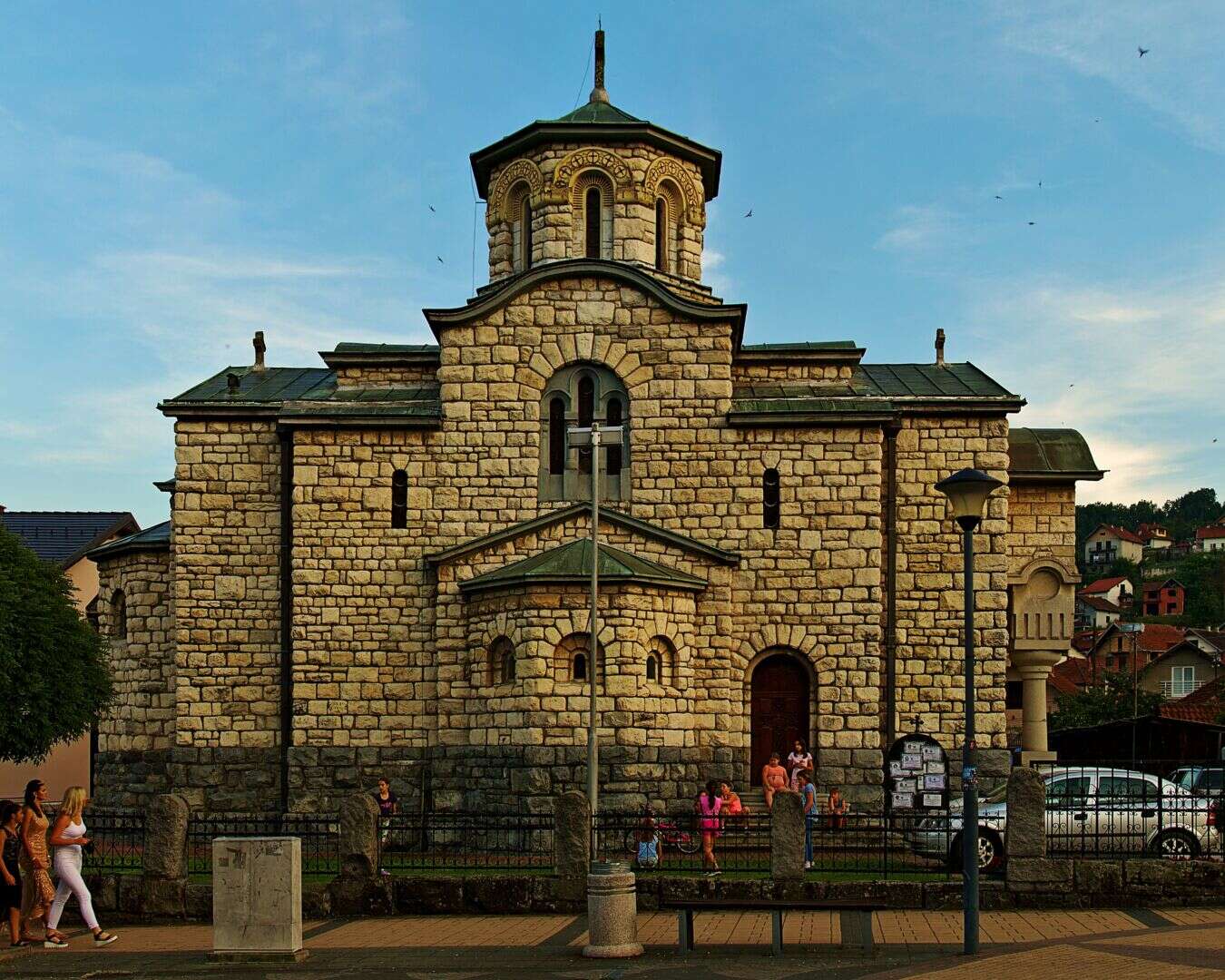
As we get closer to the Memorial Church of the Ascencion of Lord in Krupanj, the most impressive building in this city, we feel the complexity, the deep history carved into the Balkans, Serbia, Krupanj… Beneath all the smiles, beneath all nature, all freshness and joy, beneath the beautiful green landscape – there is a lot of history, there are many untold stories, many revolutions, accidents, tragedies…
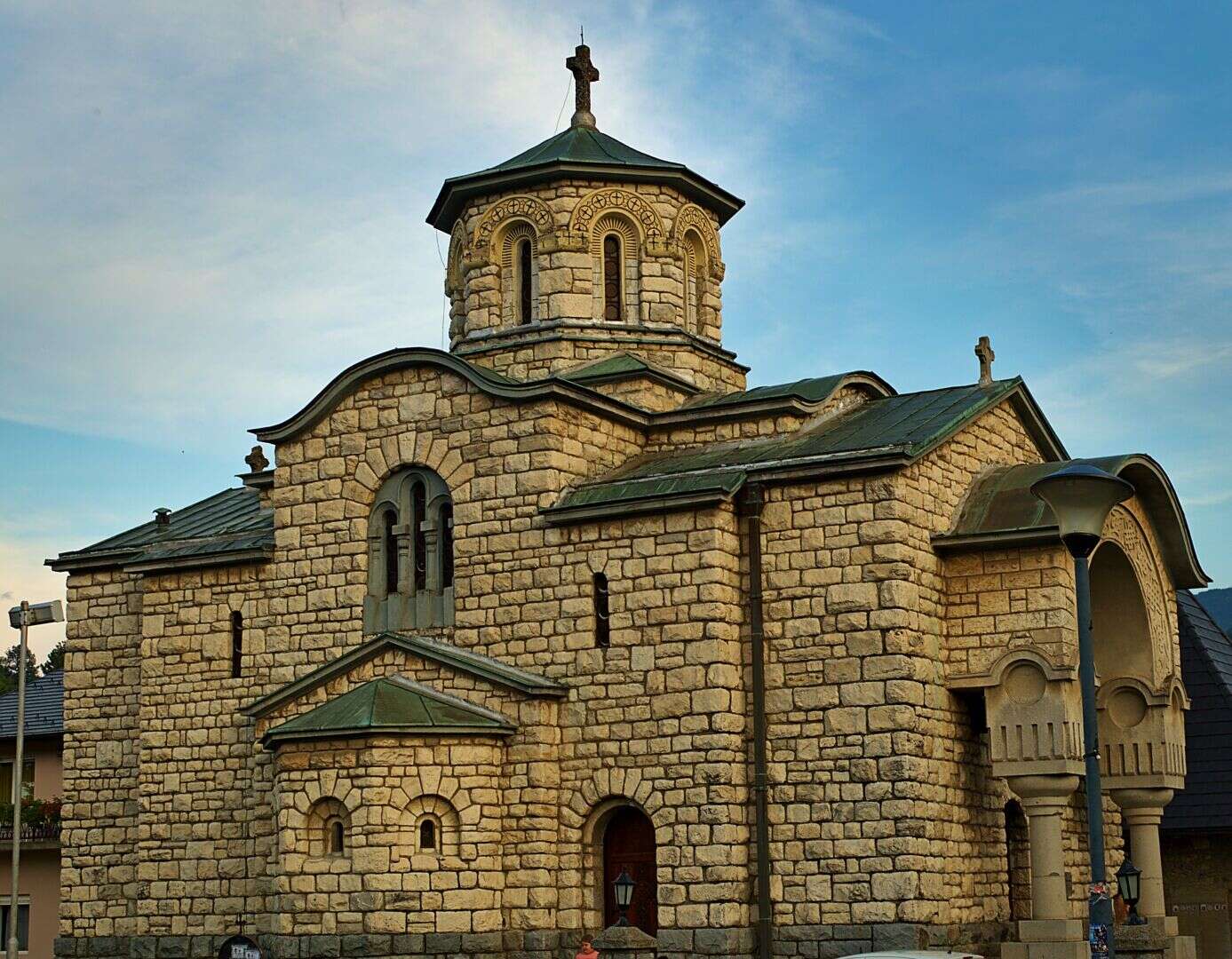
This imposing stone building, on which staircase children are forever sitting and cheerfully planning mischiefs and bicycle expeditions into the surrounding hills, was consecrated in 1932, in memory of the victims of the First World War, in the Battle of Mačak’s Stone in 1914. In the crypt of the church there is an ossuary containing the remains of the dead soldiers. Not only soldiers of the Serbian army, but also of the Austro-Hungarian army, all those who died on the deadly mountain.
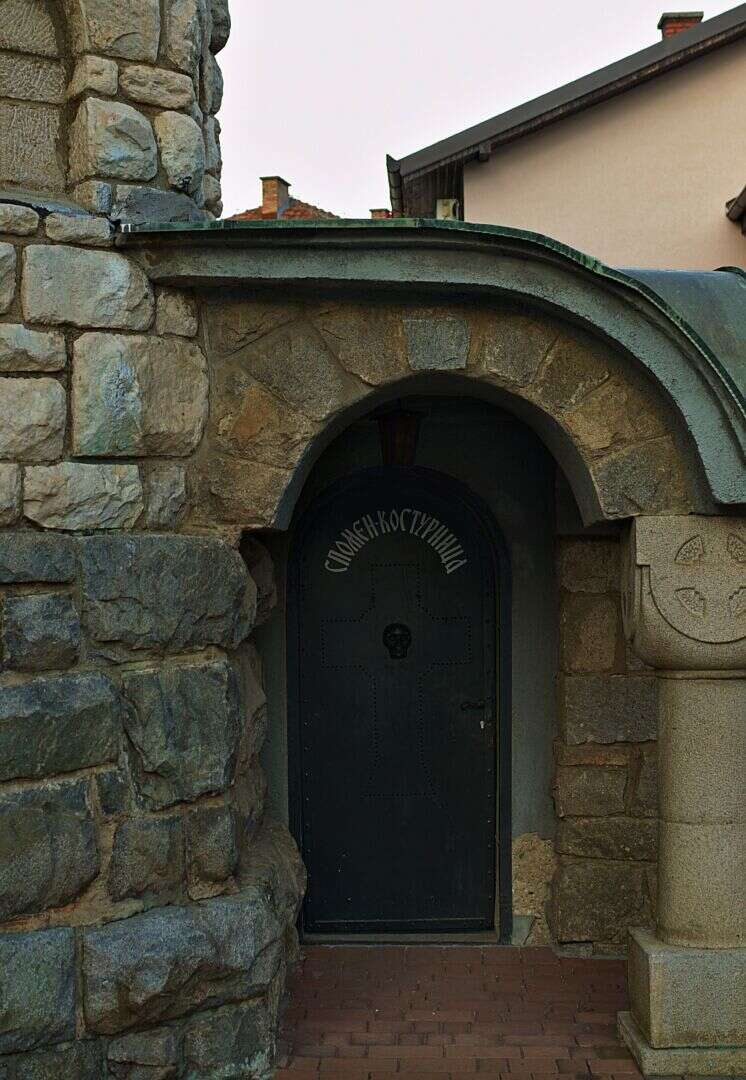
At that summit, on the top of the nearby Jagodnja Mountain, 1,200 Austro-Hungarian soldiers died, under the command of legendary General Oscar Potiorek, who, only 3 months before, escaped the bullet that Gavrilo Princip shot at him in Sarajevo. Also, 800 Serbian soldiers died there, under the leadership of duke Stepa Stepanović and general Pavle Jurishic Sturm. There are 12 marble slabs in the church, where the names of those killed are written.
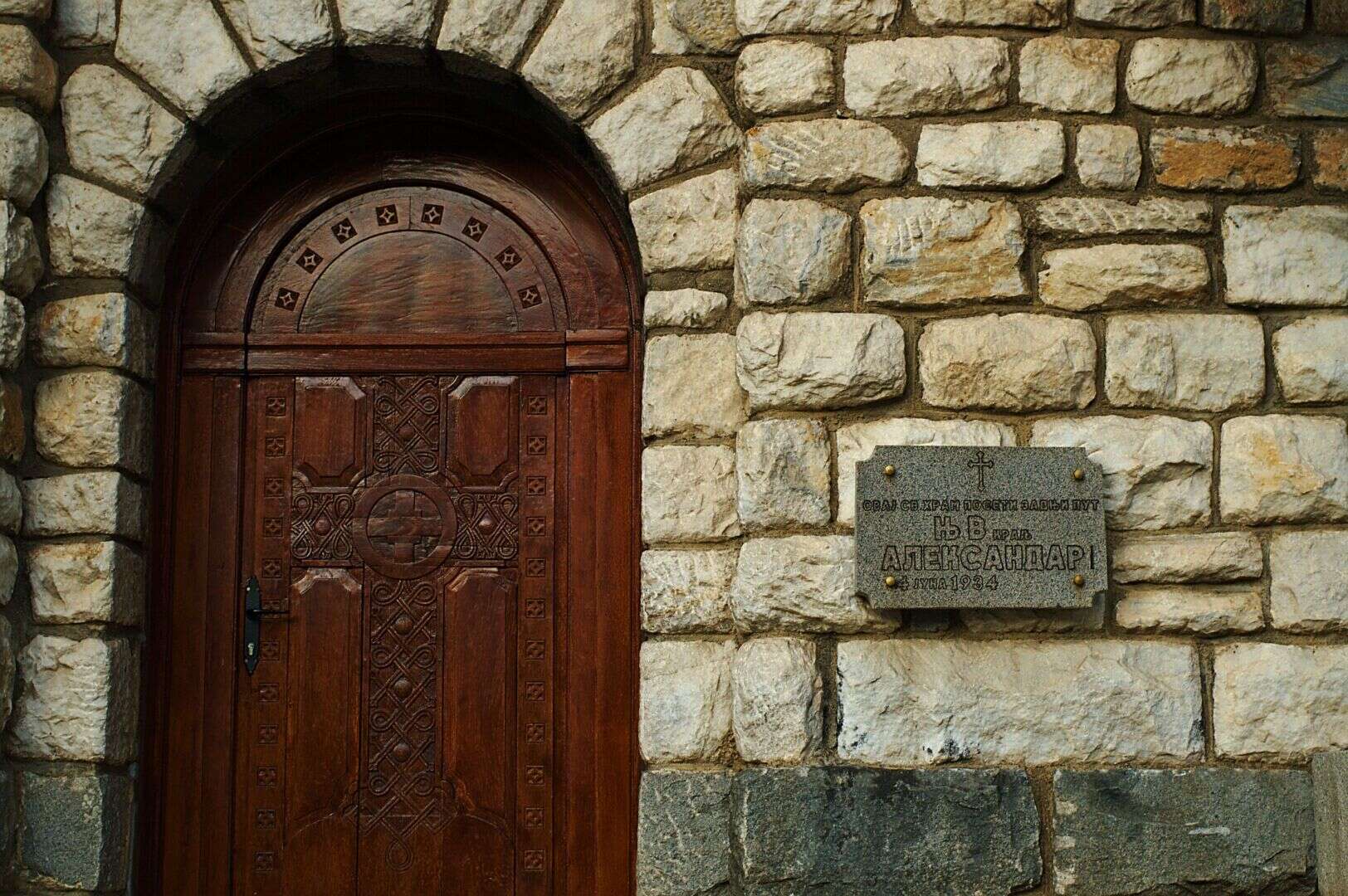
A rare thing, indeed: the Serbs here worship the bones of their ancestors who fell in the struggle for freedom, but also the bones of their enemies …
Momir Korunovic, architect of the church, received instructions that the building should look exactly like the monastery church of St. George, built by Serbian king Milutin in the 14th century.

In the ossuary, above which is inscribed “The Fairies will struggle through centuries to weave the wreaths worthy of you”, there are photographs from the battlefield, wreaths, monuments… One of the greatest Serbian writers, Veljko Petrović, wrote his “Sprouts from the burned bush”, a work in which in 1932 he described the heroism of the fighters in the Mačak Stone battle.
A young man of not more than 20 years notices us. He approaches us and hesitantly explains:
– The Germans bombed all this in 1941. Everything was destroyed, all except this Memorial church. There were bombs, from the plane, many bombs. Everything was destroyed, after the bombing, nothing left. When dust settled, only this church was left. As people approached, they all saw a giant German bomb. It was stuck in the altar wall and never exploded – the young man tells us this incredible story that has been told by everyone to everyone in Krupanj for 77 years.
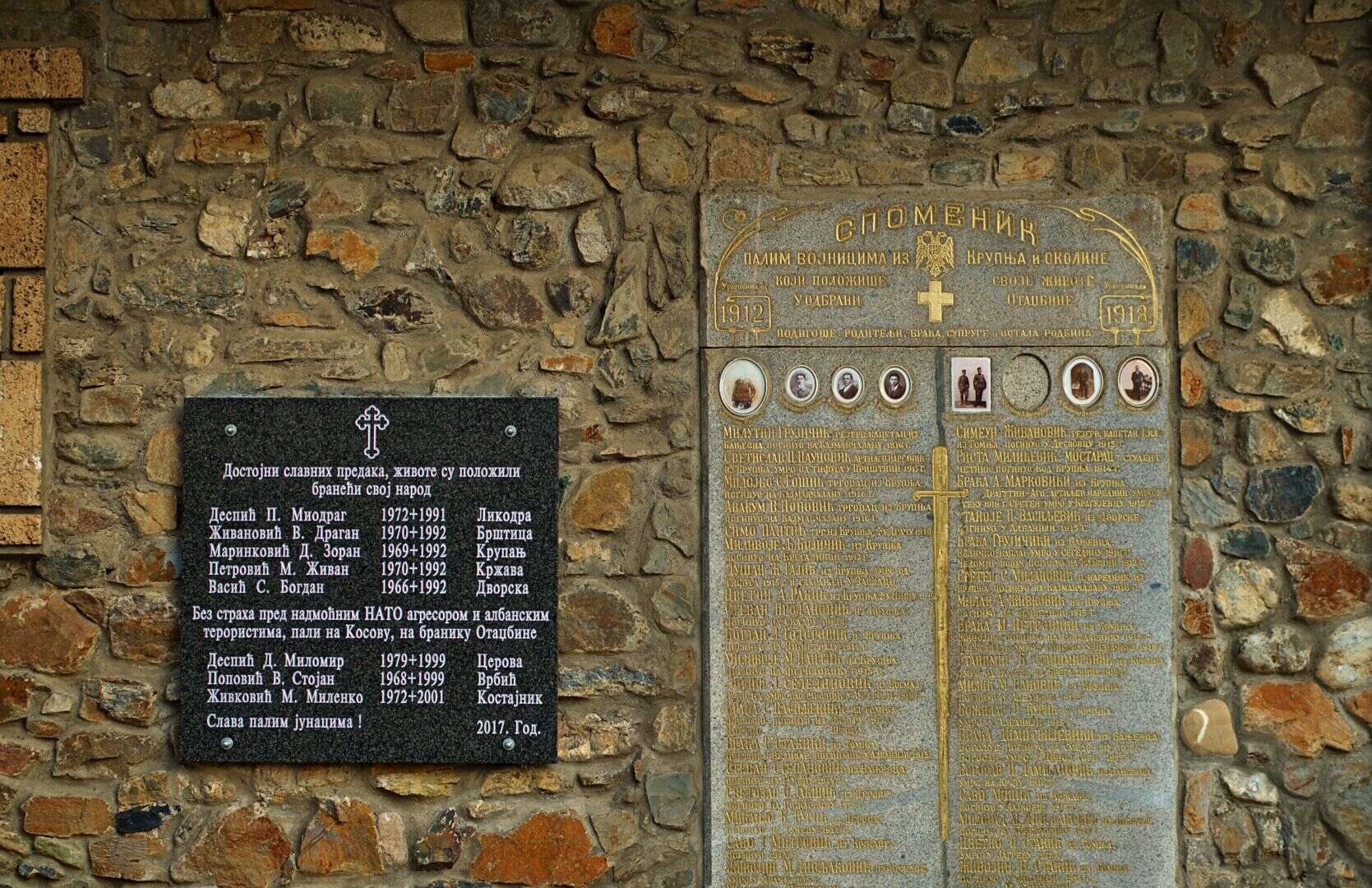
A little further down the main street, you will encounter another memorial plaque, this time dedicated to the events of that same 1941, that is, to the victims of the German massacre in the city.
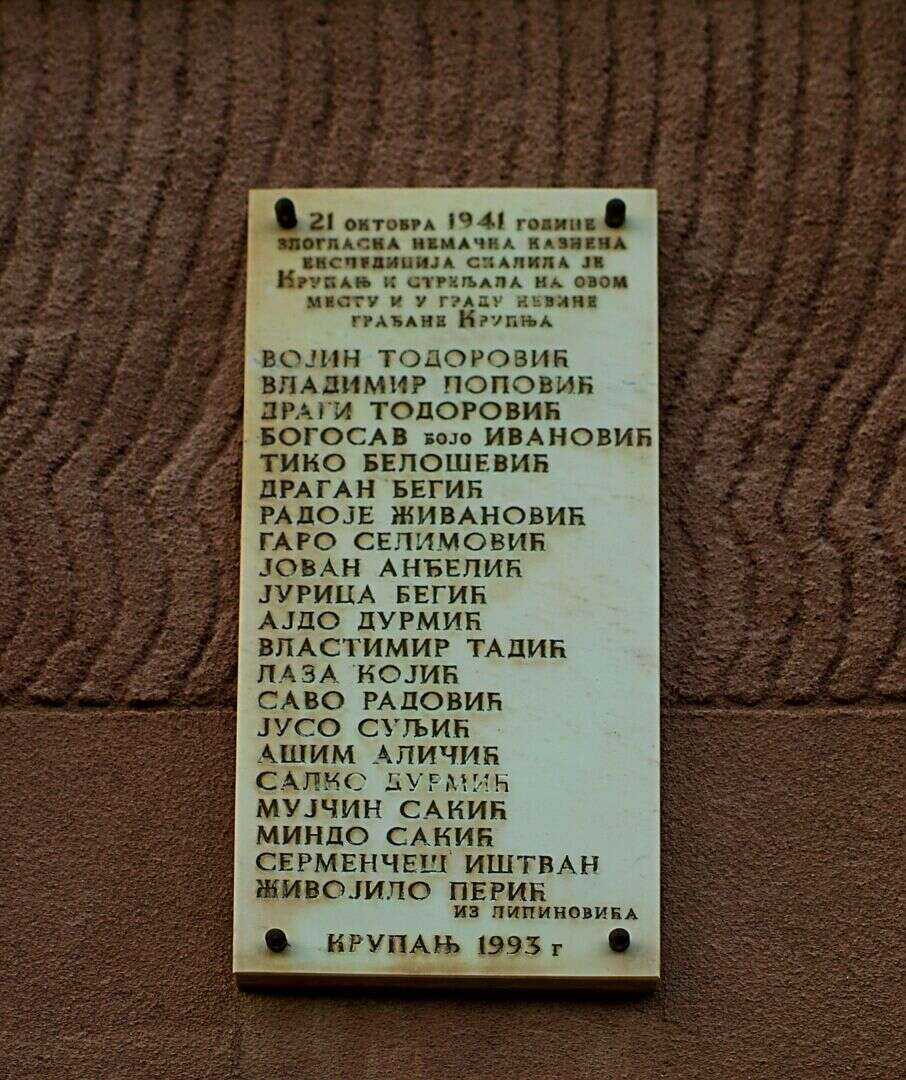
– Krupanj was liberated from the Germans in 1941, on September 4th, it was one of the first liberated places in the whole of Europe. The retribution of the 342th German division followed, which, as a punitive expedition, received an order that Krupanj must be burned to the ground and that all the inhabitants who are caught in the city are shot. The majority of people fled, so they collected the men they found, put them against the wall of the school and shot them all. The first on the list was Vojin Todorović, who was shot with Star of Karađorđe (Serbian revolution leader) on his chest, while the youngest was Živojilo Perić, a 14-year-old apprentice who asked the Germans simply “what have I done wrong” – explains historian Dragan Grujić. The inhabitants of Krupanj also claim that a German officer, whose name has forever been forgotten by history, prevented the shooting of women and children they found in the city.
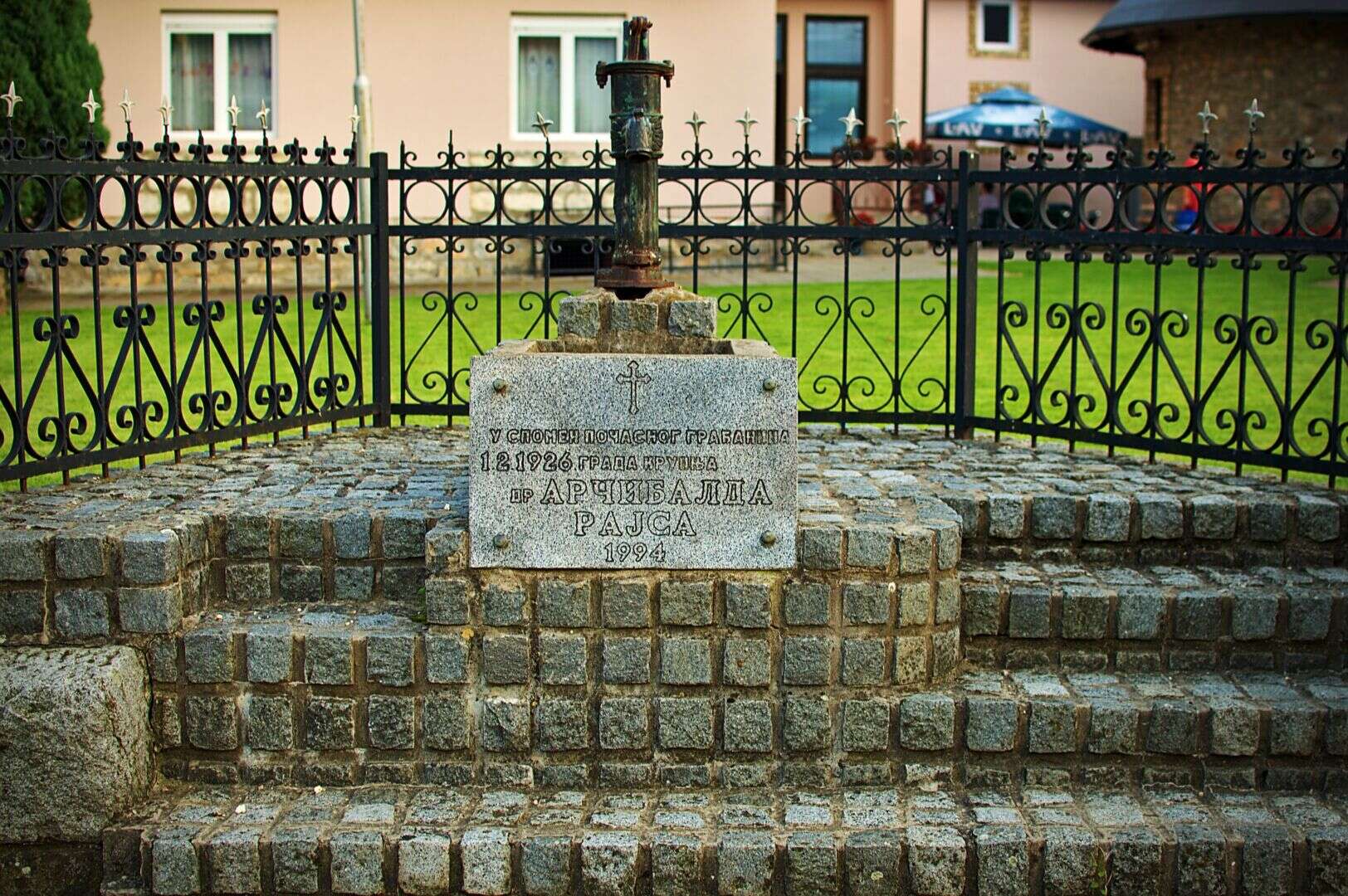
We factchecked what the young man told us – that everything was destroyed, except the Church, the old pharmacy building and the city hospital. Not far from there, in the main street, which is otherwise a pedestrian zone, stands the memorial plaque to Archibald Reiss, honorary citizen of Krupanj and the secretary of the committee for the construction of the Memorial church. Reiss was a Swiss forensic about whom entire books can be written (and they were written), who came to Serbia in 1914 to investigate the crimes committed by Austro-Hungary and Germany, and then fell in love with the Serbs and stayed here for the rest of his life, ending up in all historical textbooks as well.
We did not mention, deliberately, as we let you taste the history as you walk through the center of Krupanj – the name of the town’s main street, where the promenade is located, the Memorial church, playful children, taverns … This street is still, nearly 40 years after his death, called the Marshal Tito Street. Yes, Tito, the president of Yugoslavia and the man who marked 40 years of history in the Balkans and this part of the world.Almost everywhere the streets with Tito’s name changed it, but this name still lives strong in Krupanj.

Let’s get a little deeper: Krupanj was inhabited in Neolithic – archaeologists have excavated the neolithic ceramics and a white axe made of stone. The Romans built their settlement here. The very name Krupanj appears for the first time in the Dubrovnik writings in 1417, and until the middle of the 15th century, when it was conquered by the Turks, it was a significant mining place from which caravans with loads of silver were transported to Dubrovnik. The liberation from the Turks began in 1804, during the First Serbian Uprising. In 1837, first school was opened, and in 1842 the Church of the Holy Ascension of the Lord was built, a small building that stands just by the grandiose stone marvel that is the Memorial Church.

The city lived peacefully and prospered until the First World War, when it was turned into a part of the battlefield, and the terrible fate awaited Krupanj in World War II, when the Germans demolished it to the ground, leaving just three buildings standing. What the Nazis did not succeed, the floods of 2014. nearly did, when almost half of the city was destroyed in the waterline, and two people died. Only 4 years later, there are no traces of the flooding. If it had not been for videos and photographs, no one would believe that people of Krupanj survived the catastrophe just 4 years ago!

Today, Krupanj is a city of open heart, open streets, full of greenery, history, hospitality, magic streets, great food, tasty drinks and smiles.
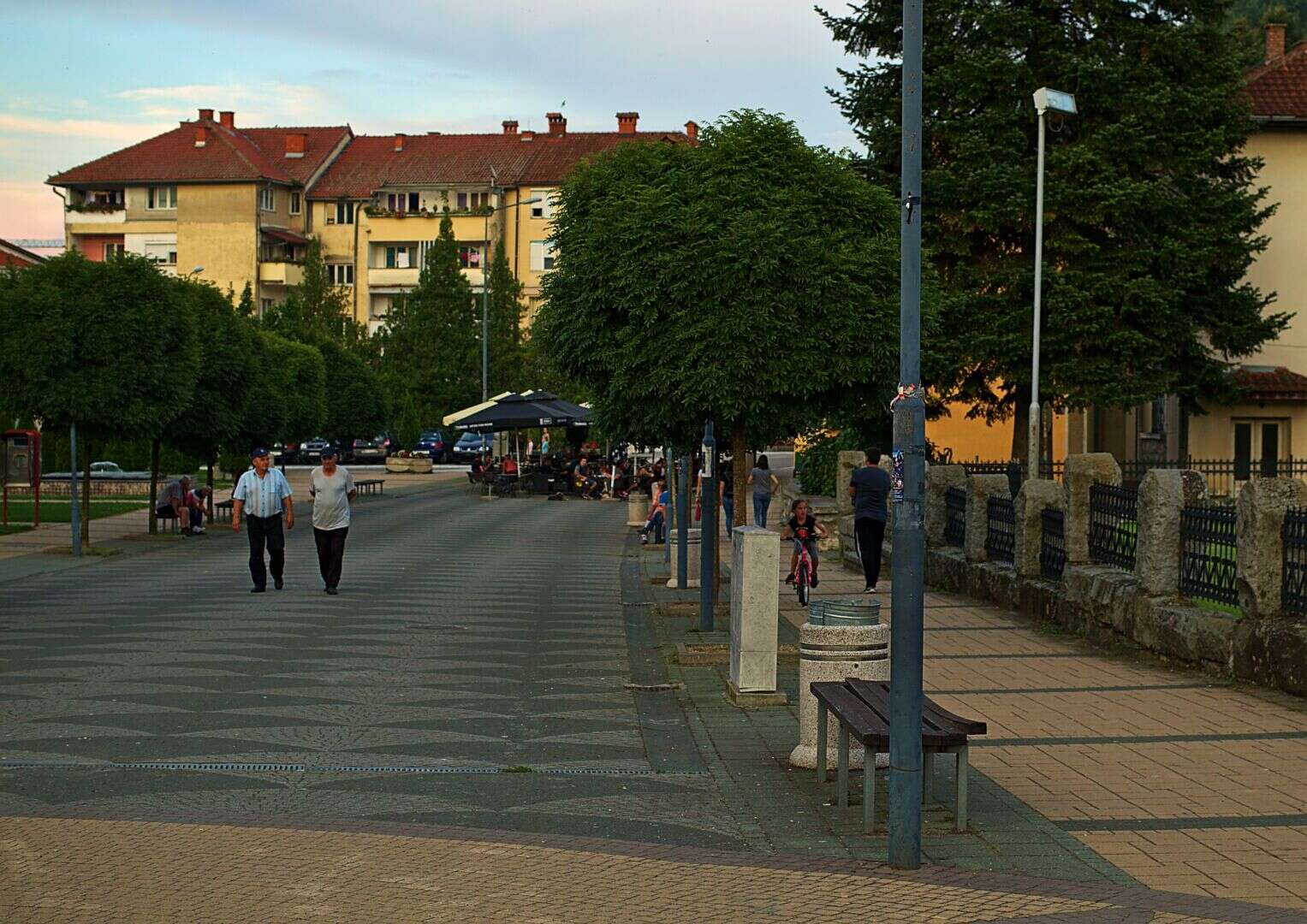
The main catering and tourist offer is the Grand Hotel, surrounded by a beautiful park, as well as forests. It has 190 beds in 1/2, 1/3 and 1/4 beds rooms, new bathrooms and furniture. The hotel has a restaurant with 250 seats, two shops, a lounge for entertainment, a cafe bar, a congress hall, a banquet hall, a football field, a handball court, a tennis court, three basketball courts, and four classrooms for children. In the immediate vicinity are the city sports hall and school hall, as well as three football fields, as well as a large outdoor pool that can be used in the summer period, and a beautiful amusement park for children, completely isolated from the traffic.
Contact telephones: +38115581122, +38115581107
Pegaz is located in the city center, with 30 rooms with bathroom and 90 beds. Each room has a TV and the restaurant has 100 seats. In the immediate vicinity there are three grassy football fields, small sports grounds, a sports hall with a gym. There is also an outdoor swimming pool very close to it.
Contact phone: +38115581997
Restoraunt pansion Rađevac offers the national cuisine and accommodation in apartments with a capacity of 12 beds.
Contact phone: +38115581074
This article is a part of the project “Seven miracles of Krupanj”, supported by the Krupanj Municipality. Positions of the supported media project do not necessarily reflect statements of the organ supporting the project.
(Come to Serbia)
